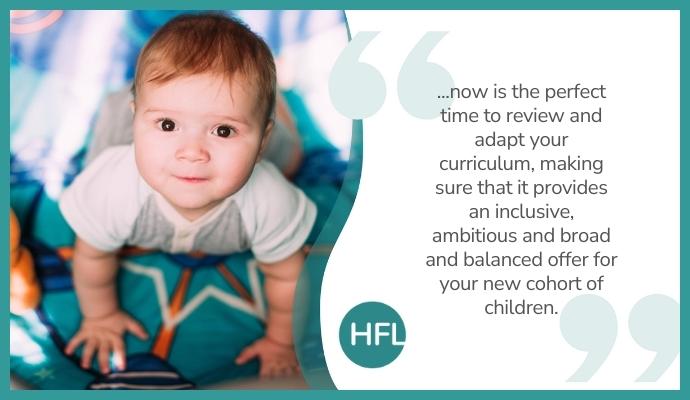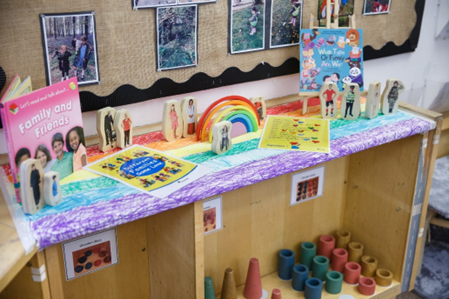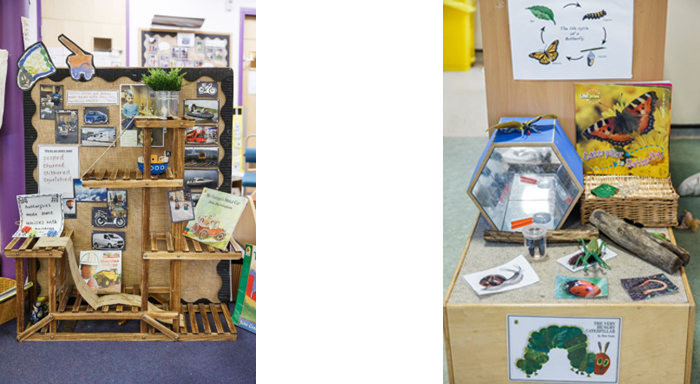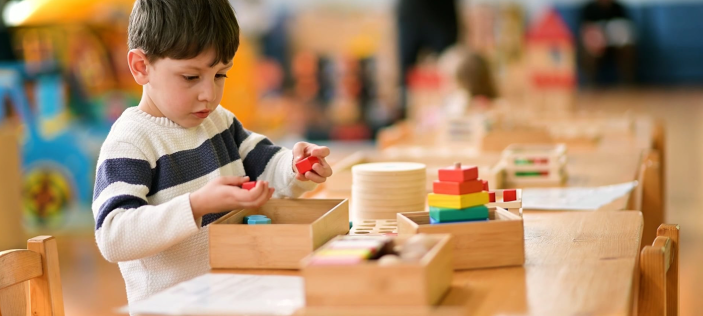
As we navigate our way through the start of a new academic year, a year since the revised Early Years Foundations Stage statutory framework was applied, now is the perfect time to review and adapt your curriculum, making sure that it provides an inclusive, ambitious and broad and balanced offer for your new cohort of children.
So what is a broad and balanced curriculum?
Put simply, a broad and balanced curriculum provides children in the Early Years Foundation Stage (EYFS) with the life skills and knowledge they need, provided in a holistic, play centred approach, that will equip them to grow up into well rounded individuals. With increasing pressures around assessment and early reading in the EYFS, in some cases, schools and settings are narrowing their curriculum. Here’s where we’re missing a trick…. why not expand our holistic curriculums and use areas of learning such as ‘Understanding the World’ as inspiration to drive your curriculum to enable broad and balanced opportunities to meet the needs of all the children in your cohort as well as fuelling learning across all the other areas of the curriculum. In doing this, children’s learning will not only be supported across all areas of the EYFS curriculum, but we’ll also be expanding children’s cultural capital.

‘The EYFS’s educational programmes provide the framework for the curriculum. It is up to schools to decide how to expand, extend and broaden these. It is for schools to decide what guidance they choose to use when developing and shaping their curriculums.’ (Ofsted Guidance, The EYFS in schools, July 2022).
Since the revised EYFS statutory framework, the educational programme of ‘Understanding the World’ has changed the Early Learning Goals (ELG’s) to:
- past and present
- people, culture and communities and,
- the natural world
Understanding the world is all about supporting children to make sense of the physical world around them as well as the community they live in. It’s about increasing children’s awareness of their locality as well as developing an appreciation for important members of society such as police officers and nurses. Understanding the world now has clear alignment to early reading clearing stating in the educational programme that understanding the world is about, ‘listening to a broad selection of stories, non-fiction, rhymes and poems will foster…understanding of our culturally, socially, technologically and ecologically diverse world. As well as building important knowledge, this extends…familiarity with words that support understanding across domains. Enriching and widening children’s vocabulary will support later reading comprehension.’

So how do we use 'understanding the world' to inspire a broad and balanced curriculum?
There are some simple yet effective ways to link ‘understanding the world’ throughout your curriculum to help maximise opportunities for children to engage them in purposeful and real-life practical experiences that will contribute to a holistic curriculum:
- use high quality books (fiction and non-fiction) as well as poems and nursery rhymes from varying cultures as hooks to excite children about specific topics. This will not only engage children into new learning but will also introduce children to new vocabulary to promote their communication and language skills
- sudit your learning environment, both indoors and outdoors, to ensure you have effective resources to enable children to explore and investigate how and why things work, where children can test out their ideas of what will happen if they do a particular thing, enjoy problem solving and learn about action and consequences
- invite important people from your local community to share their experiences, for example, why not invite parents in to share information about their jobs or a visitor from a local place of worship.
- embrace every opportunity to make use of your local environment, for example, local parks, forests or lakes and even historic buildings or places of worship
- embrace nature in your setting and be sure to provide natural resources (and even living things) in your provision to provide practical hands-on experiences to evoke children’s senses. Understanding and language development
- add enhancements to your continuous provision which promote curiosity, awe and wonder, for example, an interesting historical artefact in a curiosity cube which might trigger children to talk about what they have observed using newly introduced vocabulary and provide opportunities for children to record what they see using nearby writing implements on offer

Providing high quality practical experiences that build on children’s interests linked to the world around them can provide enriching learning opportunities that will support learning across all areas of the EYFS curriculum as well as improving children’s final outcomes in the Early Years Foundation Stage Profile (EYFSP).



